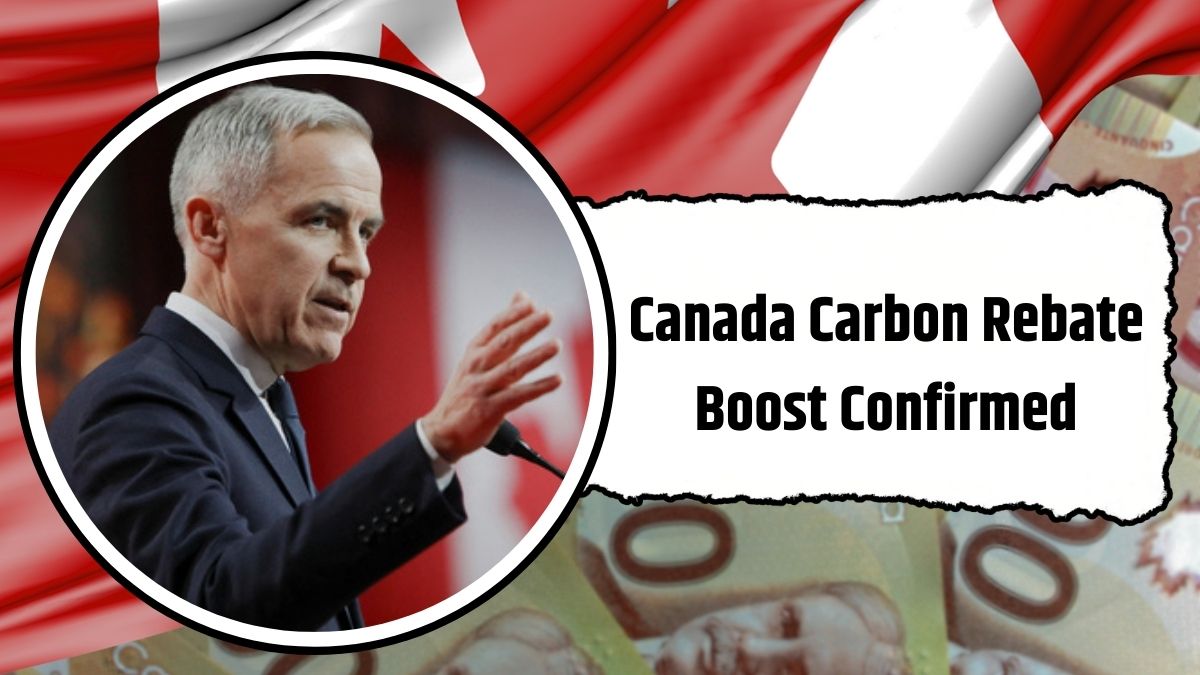Millions of Canadians are receiving larger quarterly payments under the updated Canada Carbon Rebate 2025, offering both financial relief and environmental accountability. As climate policy tightens and inflation impacts household budgets, the latest changes to this federal program provide a critical safety net for families across the country.
This year’s update not only raises payment amounts but also improves transparency, expands accessibility, and reinforces the government’s focus on climate action with direct support to households.
Key Changes in the 2025 Carbon Rebate Program
In 2025, the federal government introduced major changes to the Canada Carbon Rebate (formerly Climate Action Incentive), reflecting growing concern over climate change and affordability.
These changes were based on consultations with environmental experts, economists, and citizens, and include:
- Higher rebate amounts in response to rising carbon pricing and living costs
- Refined eligibility criteria to better account for income levels and geography
- An expanded rural supplement for small and remote communities
The result is a rebate model that better reflects real household conditions, while remaining faithful to the “polluter pays” principle at the heart of Canada’s climate policy.
How Much Can You Expect to Receive in 2025?
The Canada Carbon Rebate is designed to offset the cost of federal carbon pricing on consumers. According to the Parliamentary Budget Officer, about 80% of households will receive more back through the rebate than they pay in carbon pricing.
Here’s what a typical family could expect:
- Alberta family of four: Up to $1,120 annually
- Ontario family of four: Up to $976 annually
- Rural households: Eligible for a 20% top-up, boosting their rebate even higher
Rebate amounts vary depending on:
- Province of residence
- Family size
- Whether the household qualifies for the rural supplement
Why This Rebate Matters in 2025
As carbon pricing is scheduled to increase annually until 2030, the rebate plays a dual role:
- Encouraging climate-friendly behavior
- Returning collected carbon revenues back to households
Unlike tax credits or complex relief schemes, the Canada Carbon Rebate is direct, automatic, and predictable—appearing clearly on bank statements as “Climate Action Incentive” or “CAIP.”
This system makes the rebate visible and transparent, building public trust and giving families confidence in budgeting for quarterly support.
How to Get the Canada Carbon Rebate in 2025
Accessing your carbon rebate is quick and hassle-free. Here’s what you need to do:
- File your 2024 income tax return: This is the only required action. The CRA uses your tax data to calculate eligibility and payment amounts.
- Ensure your direct deposit is active: Payments are made directly to your registered bank account. Log into CRA’s “My Account” to update if necessary.
- Watch for deposits labeled “CAIP” or “Climate Action Incentive” on your statement.
No separate application is required. As long as your taxes are filed and your residency matches a qualifying province, the CRA will automatically issue your rebate.
Who Is Eligible for the Canada Carbon Rebate?
You are likely eligible if you:
- Live in a qualifying province (such as Alberta, Ontario, Manitoba, Saskatchewan, etc.)
- File a 2024 income tax return
- Are a Canadian resident for tax purposes
- Meet household and income criteria defined by the CRA
The payment amount will be adjusted based on:
- Number of adults and children in the household
- Postal code, which determines rural supplement eligibility
What Is the Rural Supplement?
The rural supplement is a 20% additional payment added to the base rebate for households in rural or small communities. The CRA determines eligibility based on your postal code.
This supplement recognizes that rural Canadians often face higher heating and transportation costs, and have fewer low-carbon transit options. It ensures more equitable support across the country.
When Are the Rebate Payments Made?
Rebate payments are issued quarterly, providing consistent financial support throughout the year. The 2025 Canada Carbon Rebate schedule is as follows:
- January 15, 2025
- April 15, 2025
- July 15, 2025
- October 15, 2025
If you are newly eligible, your first payment may be issued later but will include retroactive amounts.
Can Newcomers and First-Time Taxpayers Qualify?
Yes. Newcomers to Canada or those filing taxes for the first time in 2025 may qualify for the rebate—provided they:
- File a 2024 Canadian income tax return
- Meet residency and province-specific eligibility criteria
Once your return is processed, the CRA will automatically issue your rebate payments, including any back payments for earlier quarters if applicable.
Why Most Households Come Out Ahead
According to federal data, most Canadians—especially low- and middle-income earners—receive more through the rebate than they pay in fuel-related carbon charges. This structure is intentional and aims to:
- Offset consumer costs
- Encourage reduced emissions
- Reward energy-conscious behavior without financial penalty
By returning carbon revenues directly to families, the policy remains politically sustainable and economically fair.
How to Track Your Rebate Payments
You can track and manage your rebate using:
- CRA My Account: View payment history, update personal and banking info
- CRA Mobile App: Monitor deposits and notifications on the go
- CRA Helpline: Call 1-800-959-8281 for direct support
If you don’t receive your payment within 5 business days of the scheduled date, it’s recommended to contact the CRA.
FAQs: Canada Carbon Rebate 2025
Q1. Who qualifies for the Canada Carbon Rebate in 2025?
A. Anyone who files a 2024 income tax return and lives in an eligible province may qualify, with payment amounts based on household size and region.
Q2. Do I need to apply separately?
A. No. The CRA automatically issues the rebate based on your tax return.
Q3. What is the rural supplement?
A. A 20% bonus payment for residents of rural or small communities, based on postal code eligibility.
Q4. How often are payments made?
A. Quarterly—in January, April, July, and October.
Q5. Can newcomers qualify?
A. Yes. Newcomers can qualify by filing a Canadian tax return and meeting residency requirements.
